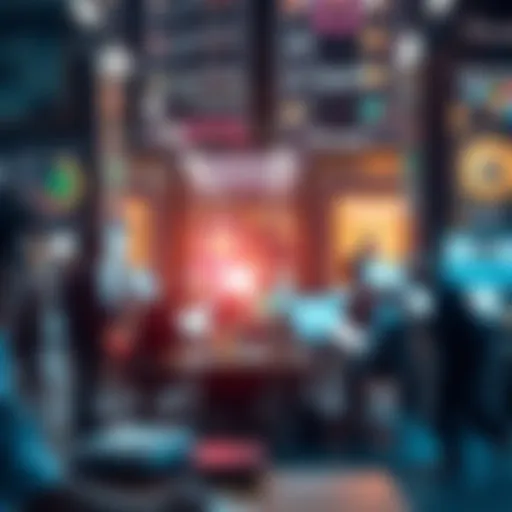Understanding CC0 Artwork in Digital Creative Spaces
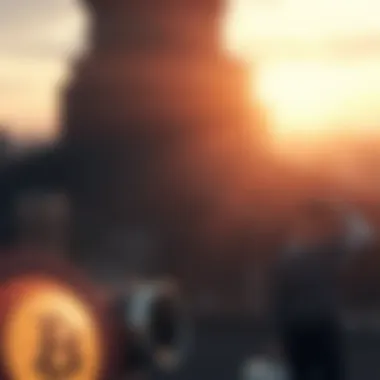

Intro
In an age where digital art is more accessible and pervasive than ever, the emergence of CC0 artwork brings a fresh perspective to how creators share their work. The Creative Commons Zero license, often referred to as CC0, allows artists to relinquish their copyright claims, presenting their creations as public domain. This shift reshapes not only the landscape of artistic expression but also influences economic and ethical discussions around art ownership.
CC0 artwork operates under the premise that anyone can use, modify, and redistribute art without asking for permission or attributing the artist. This unbinding of copyright is a double-edged sword; while it fosters a spirit of collaboration and democratizes access to art, it also raises questions about the sustainability of artists’ livelihoods in a world where their works can be freely used without compensation.
Throughout this article, we will dissect these contrasting perspectives, exploring how CC0 operates, legal ramifications involved, and the broader implications for both creators and consumers in the ever-evolving digital art market.
Prolusion to CC0 Artwork
In the rapidly changing landscape of digital art, CC0 artwork represents a significant shift in how creators share and engage with their work. The introduction of CC0 licenses offers a framework for relinquishing copyright control, allowing artists and creators to contribute to the public domain. This shift empowers individuals by providing seamless access to art, while also fostering a sense of community and collaboration among artists and audiences alike.
By eliminating the traditional barriers surrounding copyright, CC0 artwork opens up avenues for innovation and creativity. This model encourages not just the artists to explore new styles and forms, but also enables consumers and businesses to leverage artworks in various projects without the fear of legal repercussions. The implications of this practice are far-reaching, affecting community art projects, educational resources, and beyond.
Defining CC0
CC0, or Creative Commons Zero, is a widely recognized public domain dedication tool that allows creators to waive all their copyright and related rights to their works. By doing so, an artist can signal to the world that their creative output is open for anyone to use without asking for permission or giving credit. This is beneficial in countless ways, particularly when it comes to fostering a richer digital ecosystem.
The basic tenets of CC0 include:
- No Rights Reserved: Creators forfeit their ownership, meaning anyone can use the artwork for any purpose.
- Global Application: CC0 operates under a universal principle that can transcend national copyright laws.
- Encouraging Collaboration: The openness of CC0 art can lead to unexpected collaborations and the emergence of new artistic expressions.
Thus, defining CC0 isn't merely about the absence of legal constraints; it encompasses a deeper philosophy that encourages cooperations and a collective growth of creativity.
The Role of Creative Commons
Creative Commons plays a pivotal role in establishing frameworks that support open access and sharing in creative fields. Founded in 2001, this nonprofit organization aims to ensure that creators can communicate the rights they reserve and the rights they wish to waive while encouraging fair use.
Through its various licenses, including CC0, Creative Commons adds structure to the digital art landscape. By providing clear guidelines,
- Artists can transition effortlessly from traditional copyright constraints to open-sharing models.
- Users can understand how to utilize a piece of artwork respectfully and legally.
Creative Commons essentially acts as a bridge between the artist's intent and the consumer's understanding. For instance, when an artist chooses CC0, they are participating in a larger movement towards accessibility and cultural exchange that benefits society as a whole. This integration not only fills the gaps in legal ambiguities but also promotes a culture of generosity and sharing.
Therefore, in exploring CC0, it's not just the legal implications that matter; it's also about this fundamental cultural shift that urges us to rethink the relationship we have with content and creativity.
Legal Frameworks Surrounding CC0
Understanding the legalities surrounding CC0 artwork is crucial for its effective integration into the digital art landscape. This section unpacks how the legal frameworks not only safeguard the rights of creators but also simplify the process of sharing and utilizing artwork in a manner that is beneficial for both artists and the public. The implications of these frameworks cannot be understated, as they lay the groundwork for the dynamic interplay between creativity and legal protections.
Understanding Copyright
Copyright serves as a fundamental principle in art, granting creators exclusive rights over their works. This means that an artist typically has the authority to control how their art can be used, distributed, or modified. However, CC0 offers a unique twist in this narrative. By effectively relinquishing these rights, creators opt into a more open system. This process of deducing copyright to zero allows anyone to use the artwork freely, without seeking permission. This model can be fascinating for artists who prioritize exposure and accessibility over traditional copyright responses.
The essence of CC0 licenses fundamentally alters the landscape of copyright. Where typical copyright enforces restrictions, CC0 embraces sharing, allowing works to circulate freely. This act can empower users and artists alike, fostering collaboration and feeding creativity in unanticipated ways. Moreover, it helps mitigate the concerns that often paralyze individuals from using art due to fear of infringement.
How CC0 Differs from Other Licenses
CC0, unlike conventional licenses that often retain certain rights, operates under a complete waiver approach. Traditional licenses, such as Creative Commons Attribution (CC BY), require attribution to the original creator, while CC0 tosses this requirement out the window. This means users can repurpose art without crediting the artist, allowing for broader utilization.
This distinction is not merely semantic; it opens doors to unique use cases. For instance, a social media marketer can incorporate CC0 artwork into campaigns with ease, without the need to worry about licensing fuss or attributions. Yet, it does present a double-edged sword. While the client may benefit from cost-effective and hassle-free content, artists face the risk of appearing underappreciated, as their contributions may go unrecognized.
Implications for Creators
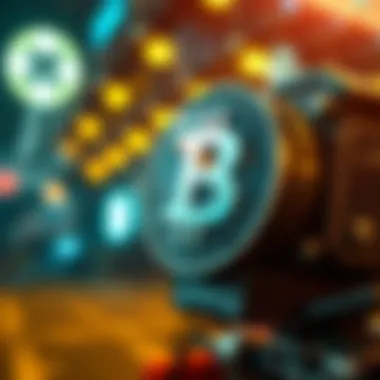

For artists, embracing CC0 can transform their approach to creation. The absence of constraints may liberate their work from the heavy chains of copyright enforcement. This can breed innovation and foster a collaborative spirit. However, there are essential considerations to note. Art, especially digital art, is becoming increasingly commodified. Creators might wonder if releasing their work into the CC0 realm curtails their potential profits. In contrast, by sharing work widely and generously, they may gain visibility that translates to future opportunities.
To summarize, the implications for creators in adopting CC0 artwork extend beyond mere copyright discussions. They encompass issues of visibility, market strategy, and the relationship between creativity and accessibility. It opens a significant dialogue about the value of art in a world that often wrestles with questions of ownership and distribution.
"The future of art lies in community and collaboration rather than stringent ownership."
For further reading on copyright and its relationship with digital art, check resources like Wikipedia's copyright laws or explore discussions on Reddit about CC0 implications.
Historical Context of Art Licensing
Understanding the historical context of art licensing sheds light on the intricate relationship between creators, consumers, and the systems that govern them. This narrative is crucial when exploring CC0 artwork as it draws a timeline of how concepts of ownership, rights, and access have morphed over centuries, ultimately affecting modern practices in the digital realm.
Art Ownership Through the Ages
The notion of art ownership has evolved dramatically since the dawn of civilization. In ancient societies, art often served communal purposes, with no clear ownership stakes. For instance, cave paintings in Lascaux were the work of many hands and held collective significance. As societies developed, so too did the concept of individual ownership. By the Middle Ages, the emergence of patrons, like the Medici in Florence, established a new dynamic. Artists created works explicitly for their benefactors, entwining their identities with those of their sponsors.
Fast forward to the Renaissance and Baroque periods, artists began to wield more influence over their creations, leading to a shift in ownership rights. They sought ways to protect their work, laying the groundwork for the formal copyright laws that would emerge in the 18th century. Copyright started as a protection against unauthorized reproduction, morphing into a means for artists to preserve their livelihood.
As licensing took shape, many began to recognize that ownership didn't just lie in the physical object but also extended to the ideas and expressions contained within. In this context, the introduction of Creative Commons licenses, particularly CC0, marks a significant milestone, blurring the lines between ownership and availability, making artworks accessible for wider use while still appreciating the creator's original labor.
The Evolution of Digital Art
The rise of the digital age has fundamentally altered the creation and distribution of art. Initially, digital art was seen as a niche form, not widely respected within traditional circles. As technology advanced, artists started utilizing software to create stunning visuals that echoed traditional styles but with a modern twist. This transformation gave birth to numerous forms of digital expression, including graphic design, video art, and generative art.
With the introduction of the internet, the concept of distribution was flipped on its head. Social media and online galleries provided platforms that drastically expanded reach, but this also led to questions about ownership and copyright. The ease with which digital files could be copied and shared brought forth a new set of challenges. Here CC0 entered the conversation, providing a way for artists to relinquish their rights, allowing their works to be used without restrictions while still encouraging creativity.
Today, CC0 artwork serves as a bridge between the past and the future. It reflects an evolving understanding of ownership in the art world, striving to empower creators while fostering a more open and collaborative environment.
In an era defined by digital interactions, the principles governing art ownership must evolve to remain relevant, supporting both artistic innovation and accessibility.
As we examine the current trends in CC0 adoption, it becomes evident how the historical context shapes perceptions and practices in the digital art landscape today.
Current Trends in CC0 Adoption
As digital art continues to evolve, the adoption of CC0 artwork is rising, signifying a shift in the art landscape that demands attention. Not only does this trend empower artists to relinquish traditional ownership rights, but it also democratizes access to creative works. This section delves into the current state of CC0 adoption, underlining its importance for both artists and the public.
Popular Platforms for CC0 Artwork
In today's digital environment, numerous platforms have emerged as champions of CC0 artwork. Websites like Pixabay, Unsplash, and Pexels have solidified their presence as repositories of CC0 images. These platforms allow artists to upload their creations with the assurance that anyone can use, modify, and share their work without legal repercussions. This approach leads to immense visibility for artists, while simultaneously expanding the pool of resources available to creators, educators, and businesses.
- Benefits for Artists: Artists on these platforms often receive recognition through attribution (if they choose), as users frequently credit sources when sharing.
- Broader Access: This increases the reach of creative works, benefiting those who may not afford licensing fees, inherently promoting a more collaborative environment in the arts.
One exciting trend is the integration of CC0 artwork into major projects, such as gaming and educational tools. Using artwork that falls under the CC0 license can save costs and also encourage innovation through remixing.
Community Response to CC0
The public reaction to CC0 has been largely positive. Many artists see it as a way to foster a spirit of sharing and collaboration. Yet, there are complexities in how the community receives this mode of license. Some creators worry about potential exploitation. They might fear that their works will be used in contexts that don't align with their personal values or artistic vision.
However, the discourse is shifting as more artists understand the benefits of joining the CC0 community. There are a few key points:
- Collaborative Nature: Many artists appreciate the collaborative spirit it nurtures.
- Expansion of Creativity: CC0 serves as a catalyst for creativity, allowing others to build upon their works freely.
- Open Dialogue: Online forums and communities on platforms like Reddit showcase thoughtful discussions around experiences with CC0 artwork, allowing for shared learning and understanding.
"The essence of art lies in sharing and reshaping; CC0 artwork opens doors to that journey."
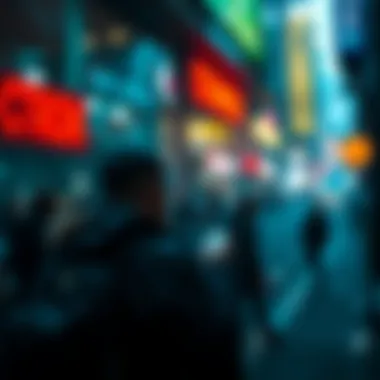

For further insights into CC0 adoption trends, the following resources are helpful:
As the evolving dynamics of CC0 art continue to unfold, both artists and consumers stand to benefit from this cultural shift.
Ethical Considerations in CC0 Art
The world of CC0 artwork has stirred up interesting conversations around ethics. As we navigate the digital landscape, understanding these considerations becomes paramount. With CC0, artists relinquish certain rights to their works, allowing anyone to use, modify, and share without restrictions. This brings about unique advantages and concerns that merit careful examination.
Respecting Artist Intent
When an artist chooses to release their work under CC0, they’re making a conscious choice to open their creation to the public. Yet, while they may intend for their art to be widely accessible, the broader implications can sometimes muddle their original message. If a piece of art is recontextualized in ways that the artist doesn't approve of or had not anticipated, it can dilute the initial intent behind its creation.
For example, have a look at the case of a digital illustration that was meant to empower a social movement. Once released under CC0, a person could use that same image in a completely different context that contradicts the artist's message. This raises questions about whether the spirit of the original artwork is respected.
It’s crucial for both artists and consumers to be aware of this dynamic. While CC0 offers freedom, there's an inherent responsibility that accompanies it. Consumers of CC0 art should strive to understand the motivations behind a piece, even when legal constraints do not mandate it.
Challenges in Attribution
Attribution is another complex issue surrounding CC0 artwork. Unlike other Creative Commons licenses, CC0 does not require users to credit the original artist. While this might seem like a boon for ease of use, it often leads to the erasure of the artist's identity in a crowded marketplace.
Consider a situation where a particularly striking digital artwork gets shared virally; many might download it, modify it, or use it for commercial purposes, all without even a passing mention of its creator. In such scenarios, the artist’s recognition vanishes into thin air, potentially impacting their professional reputation and future opportunities.
It's crucial for users to maintain a sense of ethical obligation to acknowledge artists whenever possible, even when the law does not compel them to do so. Adding a simple line of credit can foster a culture of respect and recognition.
"Artists are the backbone of creative culture. A few thoughtful words of credit can go a long way in ensuring their efforts are acknowledged."
In summary, ethical considerations in CC0 art demand a thoughtful dialogue among creators and users alike. Respecting intent while navigating the challenges of attribution invites a culture that values art and the artists behind it. This symbiotic relationship ultimately enhances the digital landscape without compromising the essence of artistic expression.
Resources:
- Creative Commons
- Wikipedia on CC0
- Learn more about Digital Art Ethics
- Reddit Community Discussions: r/Art
- Stanford University on Copyright and Attribution
- Council of Europe on Copyright
The ethical dimensions of CC0 art are intricately woven, and recognizing these layers will lead to a healthier art ecosystem, benefiting all stakeholders involved.
The Future of CC0 and Art Distribution
As we venture into the future of CC0 artwork, it's clear that this approach to art distribution carries significant implications for the broader digital landscape. CC0 not only grants creators the freedom to relinquish their copyright but also opens up avenues for collaboration and innovation like never before. This shift in mindset affects artists, consumers, and technology developers alike. Understanding these changes is crucial, particularly as society grows increasingly intertwined with digital platforms.
Decentralization and Artistry
Decentralization is becoming a buzzword in various fields, especially with the rise of technologies such as blockchain. In the art world, decentralization manifests as a move away from centralized platforms that often exert control over how art is distributed and monetized. By leveraging CC0 licenses in decentralized environments, artists can upload their works to a spectrum of platforms without fear of losing ownership rights. This allows creativity to flourish, as artists can freely share their art while still seeing benefits from it.
Imagine artists collaborating across borders, creating mash-ups or entirely new projects using CC0 licensed work without legal hurdles. This notion of community-driven artistry transforms the way art is perceived, presenting it as a collective endeavor rather than a solitary pursuit. With the removal of barriers, new styles and genres could emerge, capturing the tastes and preferences of a more diverse audience. The freedom to create, innovate, and remix is at the very heart of this movement.
Impacts of Blockchain Technology
Blockchain technology serves as a helmet for artists navigating the shifting terrain of digital art distribution. With its inherent properties of transparency and security, blockchain brings trust to an otherwise ambiguous space. Artists can maintain a digital provenance for their work, ensuring that their contributions, even under CC0, remain traceable to them. Furthermore, smart contracts can automate royalty payments or conditions for collaborations, streamlining transactions that have historically been mired in red tape.
"The promise of blockchain isn’t just in securing one’s art; it’s about creating an ecosystem where every transaction is trusted and every creator can thrive."
This technology not only safeguards creators but also allows collectors to authenticate and appreciate digital pieces with confidence. As more platforms embrace CC0 mining on blockchain, the relationship between artists and collectors could become more symbiotic, with shared interests driving appreciation and investment in CC0 works.
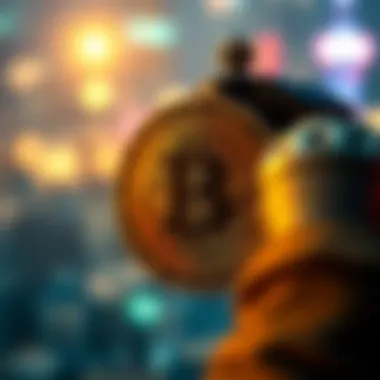

Potential Regulatory Changes
Despite the promise of CC0, the shift challenges existing legal frameworks and may provoke a rethinking of intellectual property laws. As the CC0 model gains traction, regulators may be compelled to adapt laws to accommodate these changes. For instance, the protection of artists' moral rights may require legislation that safeguards their intent while still respecting the freedom associated with CC0 licenses.
This regulatory evolution could help articulate clear guidelines for CC0, reassuring creators about usage, attribution, and potential commercial implications. It's crucial for regulators to strike a balance between protecting artists and fostering an environment where creativity can thrive without unnecessary impediments. Clear legislative frameworks will provide the foundation for CC0 artwork to flourish while ensuring that artists' rights and intent are respected.
In summary, the future of CC0 artwork appears promising and complex, as it intertwines with decentralization, blockchain, and evolving regulations in the digital landscape. By embracing these changes, artists, investors, and policymakers can catalyze a vibrant ecosystem rich with opportunity. As discussions around CC0 continue and technologies advance, it will be fascinating to witness how the interplay of these elements shapes the art world.
For more information on the implications of CC0, you can explore articles from sources such as Wikipedia and Britannica. These insights can provide further context regarding legalities and trends in the realm of digital art.
Case Studies of Successful CC0 Artwork
Examining case studies of successful CC0 artwork sheds light on the practical applications of this unique licensing model. It highlights how artists are leveraging the freedom that CC0 offers, and it underscores the communal benefits and innovative potential that arise. Understanding these specific cases is essential in grasping the broader implications of CC0 in the art landscape.
Notable CC0 Projects
Several projects stand out as prime examples of CC0 artwork's potential:
- The Public Domain Review: This initiative showcases artworks that have entered the public domain or are released under CC0, providing a rich tapestry of historical significance and aesthetic value. The review encourages artists to interact with these works, translating old masterpieces into contemporary pieces.
- Open Peeps: An illustration library created by Sergio Ingravalle, Open Peeps offers users a collection of hand-drawn characters for use in various creative projects. The library is entirely CC0-licensed, meaning anyone can take the illustrations, adapt them, and even use them commercially without any need for attribution.
- Freesound: While primarily an audio platform, Freesound allows users to upload and share sounds under various licenses, including CC0. This fusion of audio and visual creativity showcases how CC0 can cross mediums and inspire collaborative projects that might not have happened in a more restrictive copyright environment.
Each of these projects not only exemplifies the versatility of CC0 artwork but also emphasizes a culture of sharing and creativity. They encourage collaboration and innovation, positioning artists as part of a larger community rather than isolated creators.
"CC0 frees art, dissolving barriers and fostering a collaborative spirit among creators."
Impacts on the Art Community
The impacts of CC0 on the art community are multifaceted:
- Enhanced Accessibility: Artists from various backgrounds can access a wealth of visual and audio resources. This accessibility can foster new dialogues and artistic interpretations.
- Encouragement of Experimental Art: With fewer restrictions, artists feel less pressure to conform to commercial expectations. This has spurred creativity, allowing for works that challenge traditional norms and exhibit unique stylistic choices.
- Democratic Participation: The CC0 model enables everyone, not just established artists, to share their works. This approach democratizes artistry, giving voice to newcomers and promoting diversity in creative expression.
- Potential for Hybrid Creations: The seamless blending of various mediums under CC0 allows for hybrid creations, where artists combine sound, visuals, and text in ways that were less prevalent under traditional copyright frameworks.
In sum, the adoption of CC0 artwork has planted seeds of creativity that benefit the entire art community. It has inspired a shift away from siloed productions towards a more collaborative network where ideas can flow freely, growing a richer creative environment.
End
The topic of CC0 artwork carries substantial weight in the discussions surrounding digital art. The significance of understanding this open license goes beyond mere legalities; it touches the heart of artistic freedom, access, and collaboration in the digital landscape. As we draw our insights together, several key elements emerge that illustrate why CC0 is a pivotal framework in today's creative ecosystem.
Summary of Key Insights
- Empowerment of Creators
- Accessibility for All
- Encourages Collaboration
- Unleashing Creativity in Tech
- A Paradigm Shift in Ownership
- CC0 allows artists to release their work into the public domain, thus empowering them to share their creations freely. This shift not only fosters a sense of community but also encourages innovation as others can build upon original ideas.
- With CC0, art becomes accessible to everyone, breaking down barriers that typically exist in traditional art forms. This democratization means artists from diverse backgrounds can showcase their work to wider audiences without the constraints of copyright issues.
- The utilization of CC0 licenses promotes collaboration among artists. When creators fear no legal repercussions, they are more likely to cooperate, resulting in new, exciting combinations that can push the boundaries of digital art.
- The tech world benefits significantly from CC0. Developers often use CC0 artwork in projects, whether for software, applications, or game design, essentially linking technology and art in a symbiotic relationship.
- As the concept of ownership evolves, CC0 artwork challenges traditional notions of art being a commodity. It proposes a model where value is derived from culture and community rather than from exclusivity.
Final Thoughts on CC0 Artwork
As we stand on the cusp of a new era in digital creativity, the implications of CC0 artwork beckon deeper consideration. It serves as a reminder that art is not just about ownership—it's about connection, shared experience, and the fostering of ideas. In an age where innovation is rapid, adapting legal frameworks to facilitate artistic expression and collaboration is crucial.
“Art is not freedom until it can be shared. CC0 provides that platform.”
It is clear that CC0 artwork resonates with a growing number of artists, developers, and enthusiasts alike. The increased visibility of CC0 projects might just reflect a future where digital art thrives under principles of openness and creativity. As trends continue to evolve, one thing remains certain: CC0 will play a vital role in shaping the landscape of digital art for years to come.
For further exploration of CC0 policies and their developments, consider visiting resources such as Creative Commons and articles from established scholarly databases like JSTOR.





